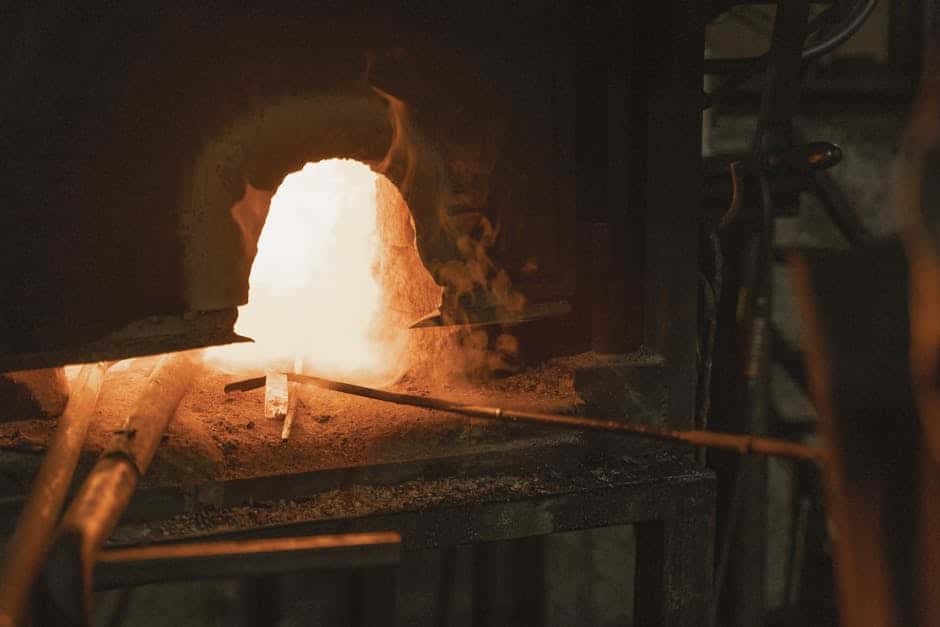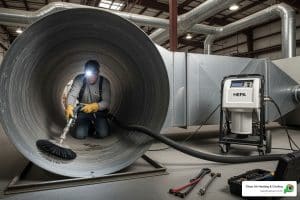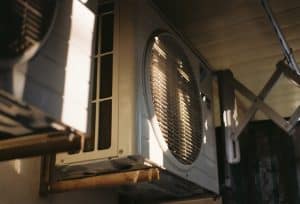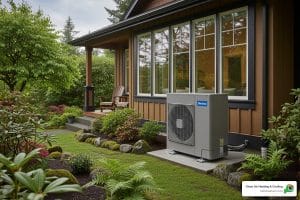Introduction
Bellingham furnace repair is crucial to keeping your home warm and comfortable during the chilly winters in Washington. Whether you face freezing temperatures or simply want to ensure your system runs efficiently, understanding the importance of proper furnace maintenance and repair can save you a lot of stress and money.
Quick solutions for Bellingham furnace repair:
– Regular maintenance: Schedule annual checks.
– Identify common issues: Look for signs like strange noises or inadequate heating.
– Choose reliable services: Opt for licensed and insured professionals.
– Act promptly: Don’t ignore warning signs to prevent further damage.
Bellingham’s cold climate can make furnace issues more pressing. An efficient furnace not only provides warmth but also lowers your utility bills and improves indoor air quality. Regular maintenance can extend the life of your furnace, prevent unexpected breakdowns, and enhance overall performance.
For more detailed information and professional tips, continue reading our guide below.

Common Furnace Problems and How to Fix Them
Even the best-maintained furnaces can face issues over time. Here, we’ll go over some common furnace problems and how you can troubleshoot them.
Thermostat Issues
Your thermostat is the brain of your heating system. If it’s not working right, your furnace won’t either.
Improper Settings: Sometimes, the thermostat is simply set to the wrong mode. Ensure it’s set to “heat” and the temperature is set higher than the current room temperature.
Troubleshooting Steps:
1. Check the Settings: Make sure the thermostat is set to “heat.”
2. Replace Batteries: If your thermostat uses batteries, replace them.
3. Clean the Thermostat: Dust can affect the thermostat’s performance. Open it up and gently clean it with a soft brush.
Dirty Filters
Dirty filters can block airflow, causing the furnace to work harder and less efficiently. This can lead to higher energy bills and potential damage to the system.
Impact on Airflow: A clogged filter restricts airflow, making your furnace work harder and less efficiently. This can lead to overheating and system shutdowns.
Cleaning/Replacement Steps:
1. Turn Off the Furnace: Always turn off the furnace before checking the filter.
2. Locate the Filter: Usually, it’s found in the return air duct or the blower compartment.
3. Inspect the Filter: If it’s dirty, replace it with a new one. Filters should generally be replaced every 1 to 3 months.
Circuit Breaker
A tripped circuit breaker is a common issue that can cause your furnace to stop working.
Tripped Breaker: If your furnace suddenly stops, check the circuit breaker.
Resetting Steps:
1. Locate the Breaker Box: Find your home’s breaker box.
2. Check the Breaker: Look for the breaker labeled “furnace” or “heating.”
3. Reset the Breaker: If it’s tripped, flip it off and then back on.
Gas Valve
If your furnace uses gas, a closed gas valve can stop it from working.
Checking and Opening: Ensure the gas valve is open.
Safety Precautions:
1. Locate the Gas Valve: It’s usually near the furnace.
2. Check the Position: Ensure it’s in the “open” position (parallel to the gas line).
3. Smell for Gas: If you smell gas, turn off the valve and call a professional immediately.
Pilot Light
For furnaces with a pilot light, this small flame ignites the burners. If it goes out, your furnace won’t work.
Relighting Steps:
1. Turn Off the Furnace: Turn off the furnace and wait a few minutes.
2. Locate the Pilot Light Assembly: This is usually near the bottom of the furnace.
3. Follow Instructions: Follow the manufacturer’s instructions for relighting the pilot. Usually, this involves turning the gas valve to “pilot,” holding a match to the pilot opening, and pressing a reset button.
Safety Tips:
– Ventilation: Ensure the area is well-ventilated.
– Professional Help: If you’re unsure, it’s best to call a professional.
By understanding these common issues and how to fix them, you can keep your furnace running smoothly and avoid costly repairs.
Next, we’ll discuss how to diagnose furnace problems more thoroughly.
How to Diagnose Furnace Problems
Inspect the Thermostat
First, check your thermostat settings. Sometimes, the solution is as simple as ensuring it’s set to “heat” and the temperature is above the current room temperature.
Steps:
1. Settings Check: Make sure the thermostat is set to the correct mode and temperature.
2. Battery Replacement: If your thermostat uses batteries, replace them. Low battery power can cause the thermostat to malfunction.
If the thermostat is still not working, it may need to be recalibrated or replaced. In such cases, calling a professional can save you time and frustration.
Confirm Power Supply
If your furnace isn’t turning on, it might be due to a power supply issue.
Steps:
1. Circuit Breaker: Check your home’s electrical panel and see if the circuit breaker for the furnace is tripped. If it is, reset it.
2. Power Switch: Ensure the furnace’s power switch (usually located near the furnace) is turned on.
If the breaker trips again after resetting, there could be an electrical issue that requires professional attention.
Check Air Vents and Filters
Blocked air vents and dirty filters can restrict airflow, causing your furnace to work harder than necessary.
Steps:
1. Blockages: Walk around your home and make sure all air vents are open and unobstructed.
2. Cleaning Tips: Check the furnace filter and replace it if it’s dirty. Filters should be replaced every 1-3 months, depending on usage.
Regularly cleaning and replacing filters can improve your furnace’s efficiency and lifespan.
Secure Front Panel Door
The furnace’s front panel door must be securely closed for the system to operate.
Steps:
1. Safety Checks: Ensure the front panel is properly aligned and closed. Many furnaces have a safety switch that prevents operation if the door is open.
2. Proper Closure: Listen for a click when you close the panel, indicating that it’s securely shut.
If the furnace still doesn’t turn on, there might be an internal issue that needs a professional’s expertise.
By following these steps, you can diagnose many common furnace problems on your own. However, if issues persist, it’s best to contact a certified HVAC technician for a thorough inspection and repair.
When to Call a Professional
Even with the best DIY efforts, some furnace issues are too complex or dangerous to handle on your own. Here’s when you should call a professional for Bellingham furnace repair.
Signs You Need Professional Help
Persistent Issues: If your furnace is showing the same problem repeatedly, it’s time to call in an expert. This could be a sign of a deeper issue that needs professional diagnosis and repair.
Frequent Breakdowns: Are you finding yourself constantly fixing your furnace? Frequent breakdowns are a clear indication that something more serious is wrong. A professional can identify and resolve these issues, saving you time and money in the long run.
Unusual Noises: Strange sounds like bumps, groans, or grinding noises coming from your furnace should never be ignored. These can signal serious mechanical issues that require immediate attention.
Safety Concerns: If you smell gas or see signs of a gas leak, turn off your furnace and call a professional immediately. Gas leaks are extremely dangerous and should only be handled by certified technicians.
Choosing the Right HVAC Technician
When it’s time to call a professional, choosing the right HVAC technician is crucial for reliable service. Here’s what to look for:
Certifications: Always verify that the technician is certified and licensed to perform HVAC work. In Washington, for instance, HVAC service providers must have specialty electrician licenses. Reputable companies will gladly show you their licenses and certifications.
Experience: Look for technicians with years of experience in furnace repair. Experienced professionals are more likely to diagnose and fix issues accurately and efficiently.
Customer Reviews: Check online reviews and testimonials from previous customers. A company with high ratings and positive feedback is more likely to provide quality service. For instance, Clean Air Heating & Cooling has excellent reviews, reflecting their commitment to customer satisfaction.
Professional Services: Ensure the company offers a range of services, including emergency repairs, regular maintenance, and comprehensive inspections. This shows they are equipped to handle any issue that might arise.
By choosing a certified, experienced, and well-reviewed HVAC technician, you can ensure your furnace is in good hands. This not only fixes current problems but also helps prevent future issues, keeping your home comfortable year-round.
Preventative Maintenance Tips
Preventative maintenance is key to keeping your furnace running smoothly and avoiding unexpected breakdowns. Here are some essential tips:
Seasonal Tune-Ups
Seasonal tune-ups are crucial for maintaining your furnace’s efficiency and longevity. During a tune-up, a technician will inspect, clean, and adjust various components of your furnace. This ensures that everything is working correctly and can help catch minor issues before they become major problems.
What’s included in a seasonal tune-up?
– Inspection: The technician will check all parts of your furnace, including the heat exchanger, blower motor, and electrical connections.
– Cleaning: Dust and debris can accumulate in your furnace, reducing its efficiency. The technician will clean components like the burners and the flame sensor.
– Adjustments: The technician will make necessary adjustments to ensure your furnace operates at peak performance.
Importance: Regular tune-ups can prevent up to 95% of furnace issues and can help extend the life of your system. This is especially important in Bellingham, where cold winters can put extra strain on your heating system.
Filter Change Programs
Replacing your furnace filters regularly is another simple yet effective maintenance task. Dirty filters can restrict airflow, making your furnace work harder and less efficiently.
Frequency: It’s recommended to change your filters every 1 to 3 months. If you have pets or allergies, you might need to do it more frequently.
Benefits:
– Improved Air Quality: Clean filters trap dust, pollen, and other pollutants, improving the air quality in your home.
– Enhanced Efficiency: A clean filter allows for better airflow, which helps your furnace run more efficiently and reduces energy costs.
Duct Sealing
Duct sealing is an often-overlooked aspect of furnace maintenance that can have a significant impact on your system’s efficiency and your home’s air quality.
Efficiency Improvements: Faulty ductwork can waste up to 40% of the energy used to heat your home. Sealing leaks in your ducts ensures that heated air reaches its intended destination, making your furnace more efficient.
Indoor Air Quality: Leaky ducts can allow dust, mold, and other contaminants to enter your home’s air supply. Sealing your ducts helps keep these pollutants out, contributing to a healthier indoor environment.
By incorporating these preventative maintenance tips into your routine, you can keep your furnace running smoothly, improve your home’s air quality, and save on energy costs.
Next, let’s dive into some frequently asked questions about furnace repair in Bellingham.
Frequently Asked Questions about Bellingham Furnace Repair
How do you fix a furnace that is not heating?
A furnace that isn’t heating can be frustrating, especially during Bellingham’s cold winters. Here are some steps you can take to troubleshoot the issue:
- Check the Thermostat:
Ensure your thermostat is set to “heat” and the temperature is set higher than the current room temperature. Sometimes, the issue can be as simple as incorrect thermostat settings. - Inspect the Circuit Breaker:
Go to your electrical panel and check if the furnace’s circuit breaker has tripped. If it has, reset it by flipping it off and then back on. - Examine the Air Filters:
Dirty filters can block airflow and cause your furnace to stop working. Replace or clean the filters if they are dirty. - Check the Pilot Light:
For gas furnaces, ensure the pilot light is lit. If it’s out, follow the manufacturer’s instructions to relight it safely. If you smell gas, turn off the furnace and call a professional immediately. - Inspect the Gas Valve:
Make sure the gas valve is open. If you’re unsure how to check this, it’s best to call a professional for help.
If none of these steps resolve the issue, it may be time to call a professional technician. Get in touch with Clean Air Heating & Cooling for expert assistance.
What to do if my furnace stops working?
If your furnace stops working, follow these steps to troubleshoot before calling a professional:
- Check the Thermostat:
Ensure it’s set to “heat” and the temperature is appropriate. - Inspect the Circuit Breaker:
Check if the breaker has tripped and reset it if necessary. - Replace or Clean Filters:
Dirty filters can cause the furnace to shut down. Clean or replace them as needed. - Ensure the Furnace Door is Closed:
Some furnaces won’t operate if the front panel door is not securely closed. - Listen for Unusual Noises:
Bumps, groans, or grinding sounds can indicate mechanical issues. If you hear these, it’s best to call a professional.
If these steps don’t fix the problem, contact Clean Air Heating & Cooling for prompt and reliable service.
Why is my furnace heat not turning on?
Several issues could prevent your furnace from turning on. Here are some common causes:
- Thermostat Settings:
Verify the thermostat is set to “heat” and the temperature is set correctly. - Power Supply Issues:
Check the circuit breaker and ensure the furnace is getting power. Also, check the furnace switch, usually located near the unit, to make sure it’s turned on. - Dirty or Clogged Filters:
Dirty filters can restrict airflow, causing the furnace to shut down. Clean or replace the filters regularly. - Pilot Light or Ignition Problems:
For gas furnaces, ensure the pilot light is lit. If it’s out, follow the manufacturer’s instructions to relight it. For electric furnaces, check the ignition system. - Blocked Air Vents:
Ensure that all air vents are open and unobstructed to allow proper airflow.
If you’ve checked these common issues and your furnace still won’t turn on, it’s time to call a professional technician. Clean Air Heating & Cooling can diagnose and fix the problem efficiently.
Next, let’s explore the importance of seasonal tune-ups and how they can save you money in the long run.
Call Clean Air for Your Furnace Repair Needs
In summary, maintaining your furnace is crucial for staying warm during Bellingham’s cold winters. Regular inspection and addressing common issues like thermostat settings, dirty filters, and circuit breakers can prevent many problems. However, some issues require professional attention.
At Clean Air Heating & Cooling, we specialize in Bellingham furnace repair. Our expert technicians are equipped to handle everything from routine maintenance to emergency repairs. We are committed to providing top-notch service to ensure your home remains comfortable year-round.
If you’re experiencing persistent issues or need help with your furnace, don’t hesitate to reach out. You can contact us via phone, text, webchat, or email. We’re here to help you stay warm and cozy through every season.
For reliable and efficient furnace repair in Bellingham, trust Clean Air Heating & Cooling. Your comfort is our priority.





